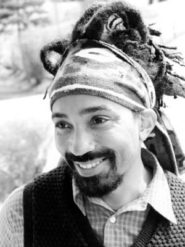Writers Read: The Torturer’s Wife by Thomas Glave
 This collection of short stories never shies away from the human potential for life-destroying darkness. Stories such as “Between,” “The Torturer’s Wife,” “Invasion: Evening: Two,” “Woman Impossible Task,” “He Who Would have Become ‘Joshua’ 1791,” and “Out There” confront the evils of war, political torture, slavery, and violence perpetrated against the gay community. Glave insists that the reader confront the violence, the death that results when people are excluded from the community or are not recognized as fully human, whether in a situation of war or the banality of gender conformity.
This collection of short stories never shies away from the human potential for life-destroying darkness. Stories such as “Between,” “The Torturer’s Wife,” “Invasion: Evening: Two,” “Woman Impossible Task,” “He Who Would have Become ‘Joshua’ 1791,” and “Out There” confront the evils of war, political torture, slavery, and violence perpetrated against the gay community. Glave insists that the reader confront the violence, the death that results when people are excluded from the community or are not recognized as fully human, whether in a situation of war or the banality of gender conformity.
Glave disposes of traditional narrative technique in order to fully enter the consciousness of his characters. In the story “Between,” the narrative is non-linear, moving quickly between past, present, and future tense so that the reader is beside, or inside, the characters’ embodied experience before, during, and after a horrific act of violence. Glave breaks the narrative here, as in other stories, with italics, parentheses, and em-dashes, forcing the reader to enter more completely into the frequently disoriented perspective of his characters. In “The Torturer’s Wife,” the bodies of the tortured become reanimated, haunting the story’s titular character. In “He Who Would Have Become ‘Joshua’ 1791,” two young boys who would be enslaved fly away.

Thomas Glave
This is not, by any means, an easy read. Over and again, Glave demands that the reader confront humanity’s most horrific capacities by fully inhabiting the internal experience of his characters—often the devastated survivors of personal and/or political violence. This is an exhausting, yet necessary, confrontation. The last story in the collection, “Out There,” explores the aftermath of a lynching from the perspective of a man who is mourning the victim, his best friend. The situation is horrifying, to say the least, but the love between the two men, the central character and his murdered friend, is present beyond death.
“Now unsure as to whether it is in fact Carlton’s or the archangel’s—and in that moment, to his astonishment and sudden quiet joy, not caring either way—he closes his eyes once more and squeezes that caressing hand…” (262).
In this particular story, Glave presents the reader with a portrait of a man who has been murdered at the hands of a community that insists upon seeing him as “other,” as less than human, due to his gender expression. We see the victim’s friend, the central character, surviving by passing. We also see how their friendship, their human connection, exists in a space beyond violence, beyond death. So often violence seems to be written gratuitously, for shock value. But every painful instance is necessary to these stories. Glave offers no simplistic solutions, he never ties the story up neatly. But in between the lines, there is the insistence that if, as readers, we look closely at evil, if we participate in the dismantling of denial, we might come an inch closer to shining light against darkness.
Glave, Thomas. The Torturer’s Wife. San Francisco, CA: City Lights Books. 2008.


 Melissa Benton Barker is a recent graduate of Antioch University Los Angeles. Her work appears on Wigleaf, Necessary Fiction, Five on the Fifth, and elsewhere. She is currently the Managing Editor of Lunch Ticket.
Melissa Benton Barker is a recent graduate of Antioch University Los Angeles. Her work appears on Wigleaf, Necessary Fiction, Five on the Fifth, and elsewhere. She is currently the Managing Editor of Lunch Ticket.


